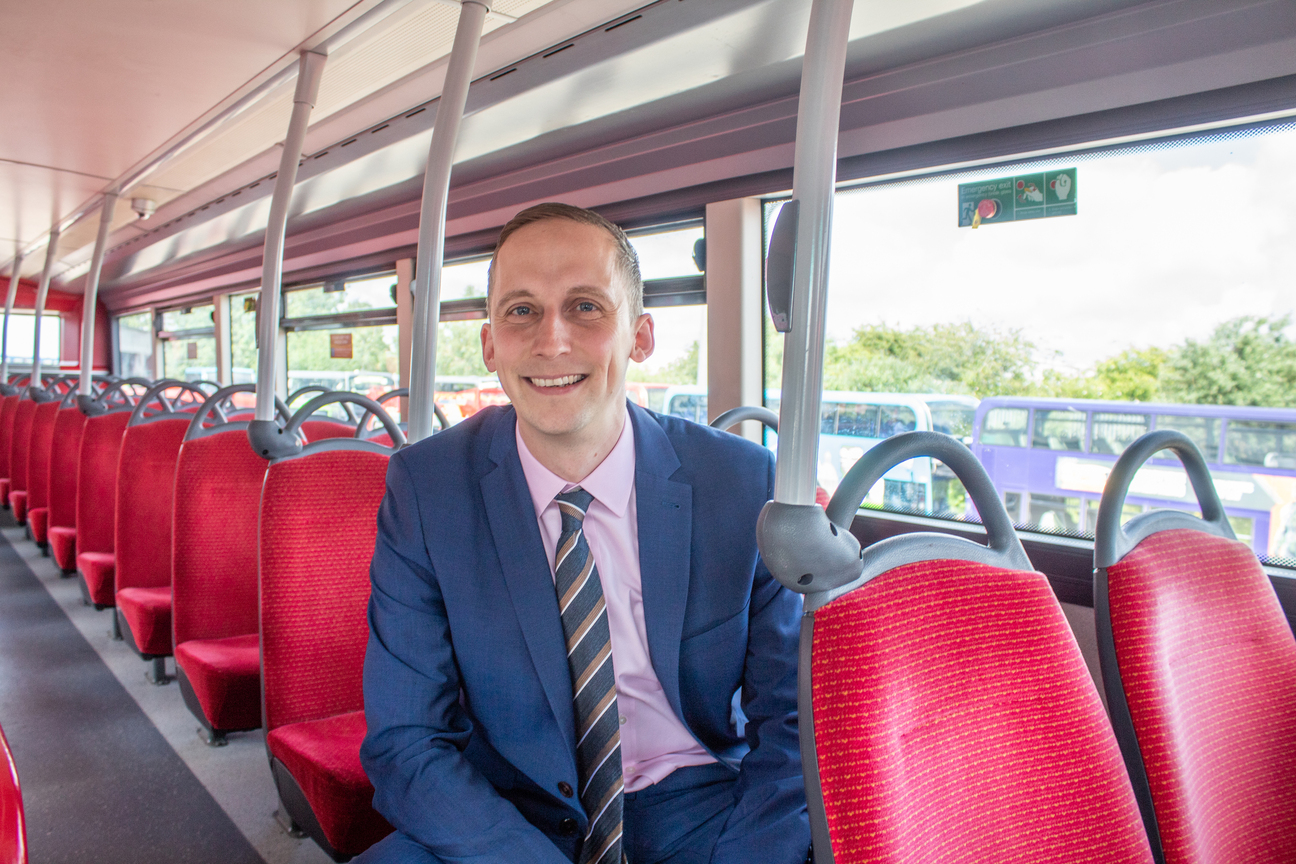We need urgent measures to tackle Oxford’s congestion emergency
2 weeks ago

By Luke Marion, Managing Director of Oxford Bus Group
Oxford is going through a congestion emergency that is crippling the city.
It is having a devastating impact not just on businesses, but also on the care sector, education, tourism, leisure and our community’s overall wellbeing.
When Network Rail’s improvement work at Oxford rail station started in April 2023, it was due to be completed via two six-month periods of road closure.
But two years later the work remains incomplete, and it is now due to take more than another year – with the road expected to remain closed until August 2026. The impact of the road closure has been devastating for many, and as a bus operator we’ve suffered too, through reductions in our patronage.
Data proves congestion is now at emergency levels across Oxford and it is holding the city back, with hundreds of hours of productivity being lost every day to traffic jams.
The Low Traffic Neighbourhood (LTN) schemes in East Oxford have also slowed bus journey times, as they funnel a lot of traffic from side roads onto main arteries converging at the Plain Roundabout, which does not have the capacity to deal with all the extra traffic – meaning the bus routes then clog up. We now have traffic jams during peak hours that previously did not exist.
The County Council’s original plan was to introduce the LTNs in conjunction with six traffic filters in the city, to encourage people to change their behaviour and to walk, cycle and use buses more where they could. It was agreed to delay launching them until Botley Road re-opened, which made sense on the original timelines for the rail works.
But Oxford simply cannot cope with another year of worsening congestion – rather than continuing to wait for the traffic filters, we need a ‘plan B’ to address the congestion problem over the next 12 months, and we need it quickly.
Journey times on Abingdon Road have increased by an average of 17% since the Botley Road was closed, and our services between Blackbird Leys and Oxford City Centre have slowed down by 33% compared to 2013 levels.
Our service 15 from Wood Farm to the City has seen its journey time worsen by an average of 15% compared to 2019, and is now scheduled to take 46 minutes at peak time, compared to 24 minutes off peak. This means that services like this operate at a greatly reduced frequency, at exactly the time that most people want to travel - which is counter-intuitive in the extreme.
We regularly adjust services where possible to mitigate the challenge of maintaining journey times on some parts of the network and in some areas, we’ve successfully introduced faster services.
But broadly it means to maintain or improve services we need to add more buses to the timetables; which is not commercially viable. The changes we recently made to increase the frequency of our 3A service to Littlemore and Sandford cost two more buses to implement than we had planned when we first started planning the improvements. Unless something radically changes, we will need to add further resources in the future simply to maintain existing timetables. It is the equivalent of operating in quicksand.
All the ingredients are in place to deliver a world-class bus service in Oxford. Last year Oxford Bus Company invested more than £30M to deliver a fleet of over 100 brand new electric vehicles, in partnership with Oxfordshire County Council and Stagecoach. Stagecoach has also made a similar substantial investment in its fleet.
Additionally, since the pandemic local bus networks have benefitted from additional central Government funding to support the Council’s Bus Service Improvement Plan. We have seen positive results from the national fare cap scheme, with this helping to encourage more people to use buses and have been able to work with the county council to grow the network to provide increased connectivity and more frequent services in many areas.
We work hard to make bus travel as appealing as possible, and a viable alternative to using private vehicles. But to realise the potential of the bus network, we now need Oxfordshire County Council to grasp the nettle and bring forward plans to re-shape the road network to help ease congestion, before the Botley Road re-opens.
A recent independent report confirmed the investment in electric buses has vastly improved air quality, but overall Oxford’s air is not benefiting as much as it could do, due to a steady increase in the volume of private vehicles on the roads.
When we agreed to invest in the electric fleet and infrastructure, Oxfordshire County Council pledged to introduce policies to improve bus journey speeds by 10% compared to pre-pandemic levels to ensure it was economically viable for bus operators to spend the huge sums involved. But sadly, conditions have got worse.
An effective bus network plays a key role in tackling congestion. In the UK 60% of all public transport journeys are taken by bus and a full bus can take more than 75 cars off the road.
To be clear we’re not calling for an end to using private vehicles. The key is ensuring that sustainable modes of travel are attractive alternatives, so there is less need to use cars. To make bus travel more appealing we need bus journeys to be faster and more reliable than is currently possible.
Congestion impacts all of us and we need radical, fast action that can deliver the change Oxford needs to remain an attractive place to live, work and visit. The city has waited a long time for change and the time is now.